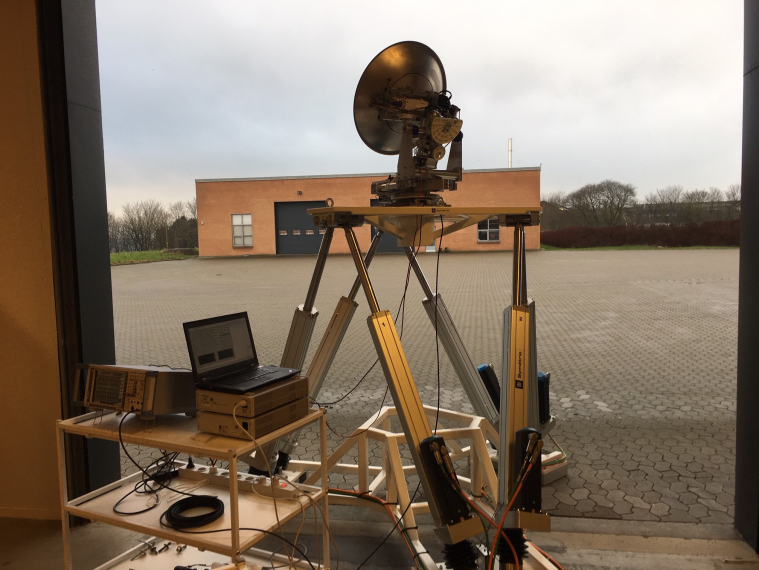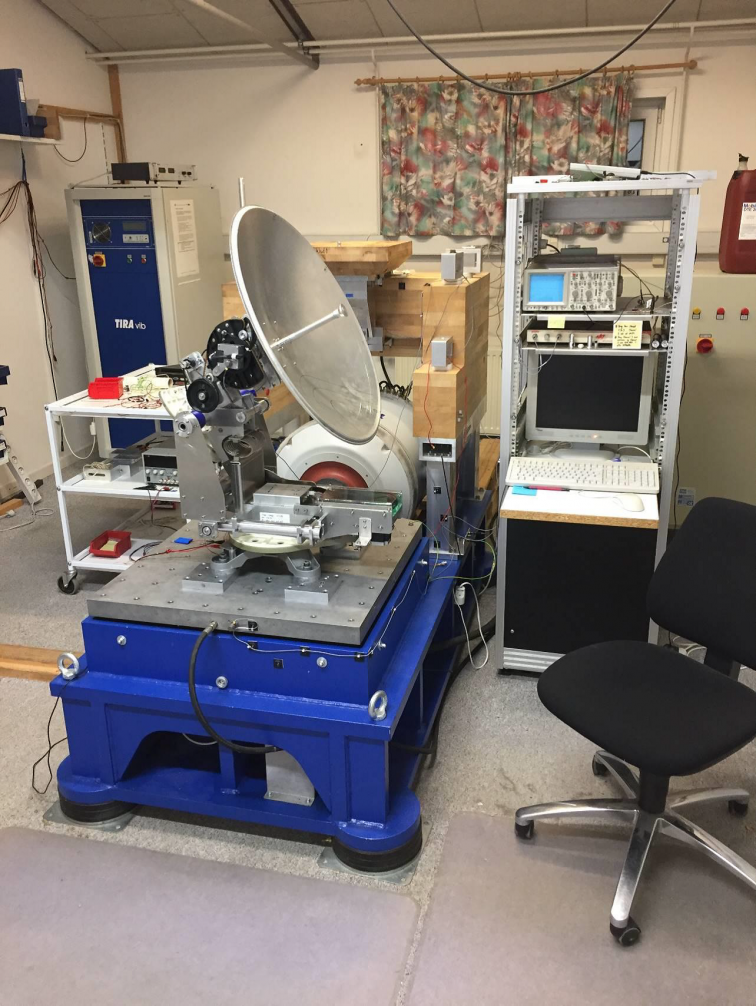
-
StatusCompleted
-
Status date2019-03-13
-
Activity Code6A.037
The main project objective of this ARTES 5.2 project was to develop a prototype 3-axis Tracking Antenna, which can withstand even the highest vibration/shock levels, with a high performance parabolic reflector with feed, a radome tuned for Ka-band, and a satellite tracking system capable of <0.2° pointing accuracy in rough seas, using solutions which ensures a competitive price.

Fig 1.: The SpaceCom A/S 3-axis Tracking Antenna on a ship motion simulator.

Fig. 2.: The SpaceCom A/S 3-axis Tracking Antenna during vibration/shock testing.
The key challenges in the project has been to develop a maritime 3-axis tracking antenna capable of handling high levels of vibration/shock, high pointing accuracy, and very low sidelobe levels as required by satellite operators during Type Approval of such a system, at a very competitive price.High performance maritime 3-axis tracking antenna, at a very competitive price.
High performance maritime 3-axis tracking antenna, at a very competitive price.
The key features of the SpaceCom 3-axis tracking antenna are:
- Low cost design
- Performance unaffected even at very high levels of Operational and survival vibration and shock
- High performance parabolic antenna and feed
- Radome tuned for Ka-band, with very low reflection and insertion loss. Very low impact on antenna off-axis sidelobe levels.
- Interface to the iDirect X7 modem
The SpaceCom A/S 3-axis Tracking Antenna consists of two units:
- The Above Deck Unit (ADU) with the 3-axis mechanical gimbal carrying the parabolic reflector with feed and the RF unit (BUC, LNB, polarizer)
- The Antenna Control Unit (ACU) which interfaces to the iDirect X7 Satellite Modem, and the ADU. It also contains a power supply for the ADU

The project was completed in December 2018.
The project was completed in December 2018. A prototype was tested and results show that all specifications are met.



